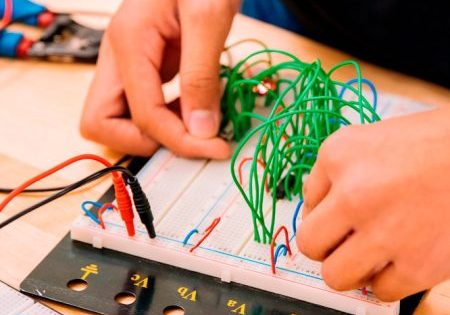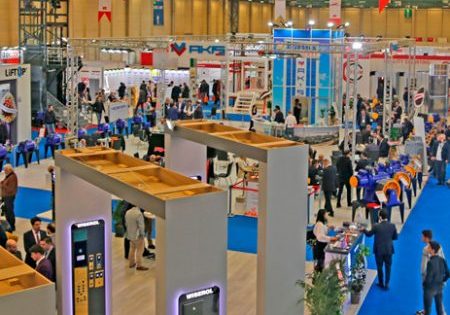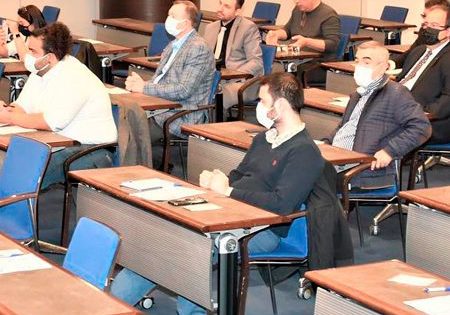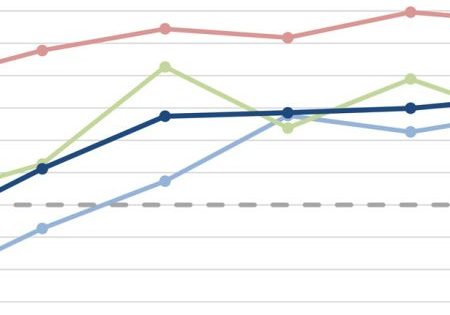Elevator maintenance and modernization have been inseparable over the years. In international references, modernization is defined as the replacement of all elevator components except the rails. Moreover, any attempt to change the rated speed, rated load and travel distance of an elevator, which was put on the market based on the elevator operation and maintenance directive in force in Turkey, requires re-registration of that elevator. Therefore, any change except these parameters, including changing the rails or the control panel, is called “modernization.”
Modernization can be made for various reasons. While some changes are made to extend the life of the existing equipment, some parts may be changed in order to provide ease of use, increase safety and provide savings. In the meantime, one of the biggest problems encountered in modernization projects is the changes required for electrical wiring. Especially in buildings with high traffic, such as hotels, commercial buildings and hospitals, where many elevators operate at the same place, such demands of the maintenance companies may be very costly. So, why do electronic parts wear out? How often should the electronic parts of the elevators be replaced? Is it possible to understand whether the bench life of an electronical component has come to an end?
Elevators are composed of a combination of many mechanical and electronical components. In fact, each component may have a different bench life.
While the printed-circuit boards wear out due to heating, voltage fluctuations and tension caused by physical vibrations, cards with power input and output and exposed to system voltage can also wear out, depending on the life of electronical and electro-mechanical elements such as resistors, diodes, transformers, thyristors, IGBT derivatives and relays. Lifetime of these elements vary based on their number of on and off, current-voltage values and material quality that the subpart can withstand. Boards with programmable integrated circuits, such as mainboards and inverter cards, are not directly exposed to system voltage. These boards operate under rectified continuous direct voltage, while direct current and direct voltage may deform depending on the quality of the power supply. Voltage tolerances for many integrated circuits operating at standard values, such as +12 V, +5 V or +3 V, are quite low. Therefore, even small deformations cause loss of functionality. Additionally, depending on usage, some capillary openings occur on the paths between the elements and, as a result, these paths lose conductivity after a certain period of time. Temperature differences and humidity due to external factors can cause such deformation. Boards may go out of use due to such reasons. While the lifetime of a bare card is generally 50 to 70 years, this period is much shorter, especially for control cards used in elevators. Generally, 10 to 25 years of lifetime is typical for printed-circuit boards. Although there are cards that function above or below this period, manufacturers make design by considering a lifetime of approximately 15 years. During planning, allocating a budget for the replacement of parts at the end of these periods, based on elevator type and building conditions, would be a wise choice.
The lifetime of electronical equipment, just like all other equipment, is directly related to the intensity to which the elevator is exposed. In fact, intensity of an elevator is a measurable value based on the number of trips and its energy consumption. Each takeoff and stop of an elevator defined as one trip is shown with digital counters on modern controllers. Energy consumption, which is a secondary criterion, it is an important indicator in terms of showing the load conditions of elevators compared to each other, or the state of the elevators according to the amount of load for which they are designed. “Residential elevators” with shorter travel distance resist less trip numbers, compared to the top-of-the-line elevator models. When this type of elevators is used in buildings with high traffic, their components will, of course, come to the end of their lives more quickly, given that they will have to operate under continuous load.
It is not possible to decide on the naked eye if the components completed their lifetimes or not. Except for obvious visual defects, such as burns, physically damaged elements or distorted parts, visual inspection it is impossible for determining whether a working component of an elevator is coming to the end of its life. Some indicators could be alarming, however.
Increasing number of power failures is an important indicator. Such failures should be analyzed, and the main reason of these failures should be explored. Increasingly repetitive failures, after extricating the impacts of factors such as environmental conditions, maintenance quality and changing densities, require replacement. Frequent CAN communication failures, resets and positioning problems command errors of the controller regarding cabin, motor and inverter parts, voltage errors, phase loss, etc., indicating board problems.
Temperature rise indicates that resistance spots occur on boards or that the sub-parts are overloaded. Temperature rise is a value that can be detected with various measurement tools. Previous measurements or similar elevators may be used for comparison. Temperature rises in simple electronic equipment, such as resistance, condenser or diode, are harbingers for board replacement. In some cases, these components may be replaced while the board is still used, but it is not a widely used method.
Irregular mechanical actions are also the indicators for sectional problems. For example, such actions as problematic door opening or closing, deleted calls on car operating panel, and vibration during takeoff and stopping of the elevator generally require replacement of the boards or connected equipment.
While maintenance of printed-circuit boards does not require physical actions, as in mechanical parts, keeping the parts clean and dry will, of course, extend their life. Additionally, making ground connections solves many problems. Screening and grounding prevent interference, especially in cables used for communication. Signal fluctuations cause failures and also shorten the lifetime of electronical equipment. Additionally, monitoring the errors and warnings of the controller, and taking necessary actions, is a maintenance task. As the whole system is interconnected, failure in any sub-system affects other components. For example, a simple deficiency, such as the lack of a proper grounding, may cause errors in many sub-components, such as encoder, inverter and button communications at different times, and may also cause unnecessary equipment replacements when detection is difficult. Periodic control of the details given in the wiring diagram provides significant benefits in this respect.
While replacement of any part of the electrical wiring may be made depending on the lifetime, they may also be replaced because it is difficult to supply certain parts in 20- to 25-year-old elevators. In such cases, cost-benefit balance should be considered in order to decide for a modernization. If there are fewer complaints about the failures, the cost has increased if the cost of the parts that will be possibly replaced within the next 10 years is quite low (e.g., maximum 20%) compared to a renewal, then it would be better to proceed by replacement with a quality maintenance that may require some cost. Or, if the renewals offered by the maintenance company provide an up-grade option, rather than a brand change, then this option should be considered.
Replacement of printed-circuit boards and its connected components under modernization projects is a costly business. The reasons for replacement should be examined, and future planning should be made in order to reduce costs. In such replacements — which are brought to the agenda through external advices in case of change in maintenance provider or building management — judgment should be made after a physical examination following the inspection of elevator history and records.
Get more of Elevator World. Sign up for our free e-newsletter.









